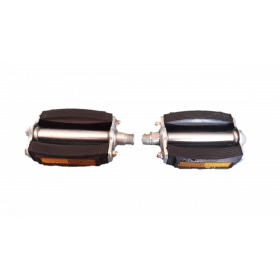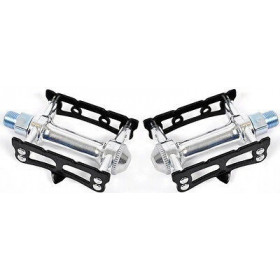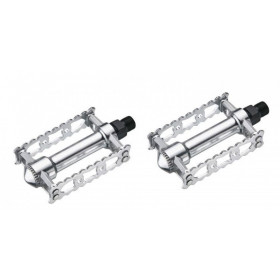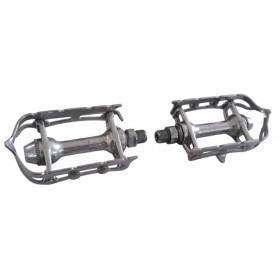-
 New productCity bike pedals
New productCity bike pedals- €5.99
-
 New productPedals MKS Japan Prime Sylvan stream black
New productPedals MKS Japan Prime Sylvan stream black- €22.99
-
 New productBrown bike pedals
New productBrown bike pedals- €9.99
-
 New productPedals aluminium VP-365 vintage
New productPedals aluminium VP-365 vintage- €16.99
-
 More detailsNew product Out-of-StockSpidel pedals
More detailsNew product Out-of-StockSpidel pedals- €29.99
Showing 1-5 of 5 item(s)
Old bicycle pedals are old bicycle parts that have specific characteristics depending on the era in which the bicycle was manufactured, but here are some general elements:
1. Function of old bicycle pedals :
The old bicycle pedals have the same function as those of modern bicycles: they allow the cyclist to transfer his power to the cranks to move the bicycle forward.2. Materials:
Old bicycle pedals were often made of metal, especially steel. Some pedals could also have rubber or wooden surfaces to provide better grip.3. Design:
The design of the old bicycle pedals can vary depending on the era and style of the bicycle. Some models may have flat pedals with ridged surfaces or nubs to provide better grip, while others may have a more elaborate design with engraved designs or metal inlays.4. Size of old bicycle pedals :
The pedals of ancient bicycles were generally smaller in size than those of modern bicycles. This may be due to the manufacturing standards of the time and the fact that bicycles were often designed for use with special shoes, such as cleats.5. Fixing of old bicycle pedals :
The mounting of the old bicycles pedals may vary depending on the model and year of manufacture. Some models may have platform pedals screwed directly onto the cranks, while others may have pedals with metal cages to hold the feet in place.6. Maintenance:
As with modern bicycle pedals, it is important to maintain the pedals of old bicycles regularly to ensure they function properly. This may include cleaning, lubricating and replacing worn parts if necessary.
In summary, the old bicycle pedals have specific characteristics depending on the era in which the bicycle was manufactured, but they essentially serve the same function as the pedals of modern bicycles. Made of metal, often smaller in size and varied in design, they are designed to provide a stable platform for the rider's feet while pedaling.
